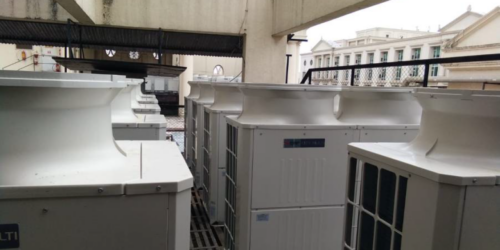How cooling happens in Air conditioner
Let’s learn from our own body. When you are wet after a bath and if you keep the fan running what do you feel? The water vaporises fast and leaves your body cool.
The evaporation of water produce a chilling effect. This is because when water in liquid form become vapour, it absorb heat from your body leaving it cool.
In an air conditioner, refrigerant evaporates absorbing heat from surroundings. This place where liquid refrigerant evaporates is called the evaporator or cooling coil.
The refrigerant after getting changed to gas is now to be brought back to liquid phase, which is accomplished through a compressor and a condenser which collectively is commonly referred as condensing unit. If this condensing process happens at lower temperature, the energy efficiency of the system improves.
The liquid refrigerant is then passed through a pressure reduction system which is either an expansion valve or a capillary tube. With the reduced pressure the refrigerant again enters the evaporator tube and absorbs heat and turns back to gas. This is a continuous cycle happening and is thus called vapour compression cycle. Please remember that in no part of an air conditioner the refrigerant comes out of the closed tubes unless in case of a leakage due to a damage.
The evaporator is the place we get the cooling effect. If we blow air over the evaporator surface, the air gets cooled. If the surface of the coil is chilled enough moisture in air condenses and we get air with lesser water content. Thus it helps reducing the humidity of air along with reducing temperature.

A heavy mass of technical stuff is not the intention of this topic, rather is to give a fair feel of how an air conditioner work.
